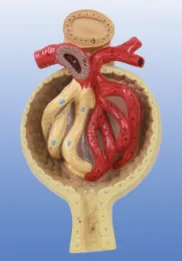Homepageпјҡ NEWS >> How can the glomerular model become a key part of precision medicine
The reasons why the glomerular model has become a key part of precision medicine are mainly reflected in the following aspects:

1. Gain insight into disease mechanisms
Glomerular models, especially those based on patient-specific genetic information and disease status, are able to simulate the pathophysiological changes of kidney disease at the individual level. This personalized simulation helps researchers gain a deeper understanding of the pathogenesis of disease and provides a scientific basis for precision medicine. By comparing the differences between healthy glomerulus and those in disease state, the key factors leading to impaired kidney function can be revealed, providing important clues for the formulation of treatment strategies.
2. Precise screening and evaluation of drugs
In precision medicine, the screening and evaluation of drugs are crucial. The glomerular model can serve as an effective drug testing platform for evaluating the effects of drug candidates on glomerular function. By testing different drugs on these models, researchers can screen for drugs that have the best efficacy for specific disease states with the least side effects. In addition, the glomerular model can also be used to assess the toxicity of drugs and ensure that patients are fully safe before receiving treatment.
3. Make personalized treatment plan
Based on the results of the glomerular model, doctors can develop more personalized treatment plans for patients. By analyzing a patient's genetic information, disease status, and changes in glomerular function, doctors can select the most appropriate drug dose, administration, and treatment cycle for the patient. This personalized treatment plan can maximize the effectiveness of treatment and reduce unnecessary drug waste and side effects
4. Predict disease progression and prognosis
The glomerular model can also be used to predict the progression and prognosis of kidney disease. By simulating the progression of the disease at different stages, researchers can assess the risks and challenges that patients may face in the future and develop prevention and intervention measures accordingly. This predictive ability can help doctors to adjust the treatment plan in time and improve the quality of life and prognosis of patients.
5. Promote interdisciplinary cooperation
The research of glomerular model involves many disciplines, including medicine, biology, engineering and so on. This interdisciplinary cooperation not only promotes the continuous innovation and optimization of glomerular modeling technology, but also provides a broader space for the development of precision medicine. By integrating the superior resources and technical means of different disciplines, it can promote the in-depth development of kidney disease research and provide more solid support for the realization of precision medicine.
In summary, the glomerular model has become an indispensable key link in precision medicine through in-depth understanding of disease mechanisms, accurate screening and evaluation of drugs, personalized treatment plans, prediction of disease progression and prognosis, and promotion of interdisciplinary cooperation.